Music theory you can use: musical modes and how to use them in your songwriting in 10 steps
Mode to joy? Step-by-step guidance, recommended listening and pro tips
Modes are something you often hear mentioned when music theory comes up, but what exactly are they? More importantly, how can you use them in your songwriting?
Just think for a moment about an arpeggiator and the different modes it has. It’s a single device, but you can change the mode it operates in to make it perform differently.
It might have one mode that plays arpeggiated notes in an upward sequence, another mode that plays them downwards, and one or two modes that play arpeggios that rise and fall in different patterns. This principle of switching modes to obtain different outcomes can be applied to the major scale.
A mode is formed when you play a major scale starting from any note other than the root note of the scale. Play a C major scale (all the white notes) from C to C and you get the usual, happy, When the Saints Go Marching In-style run of notes.
If you play the exact same notes from D to D, however, you get something totally different with a sadder, more minor, What Shall We Do With The Drunken Sailor feel.
Since a major scale contains seven different notes, each can act as the starting note, so there are seven different modes. They’re named after ancient Greek tribes, and they are: Ionian, Dorian, Phrygian, Lydian, Mixolydian, Aeolian and Locrian. Each mode has a distinctive sound and musical character.
The concept of modes is really simple once you understand what they are, but even when you’ve got your head around the basics, it can be hard to figure out what to actually do with them. So, once we’ve touched on the theory behind them, we’ll look at one or two ways you can apply modes in your own productions.
Want all the hottest music and gear news, reviews, deals, features and more, direct to your inbox? Sign up here.
Deploying modes, step-by-step
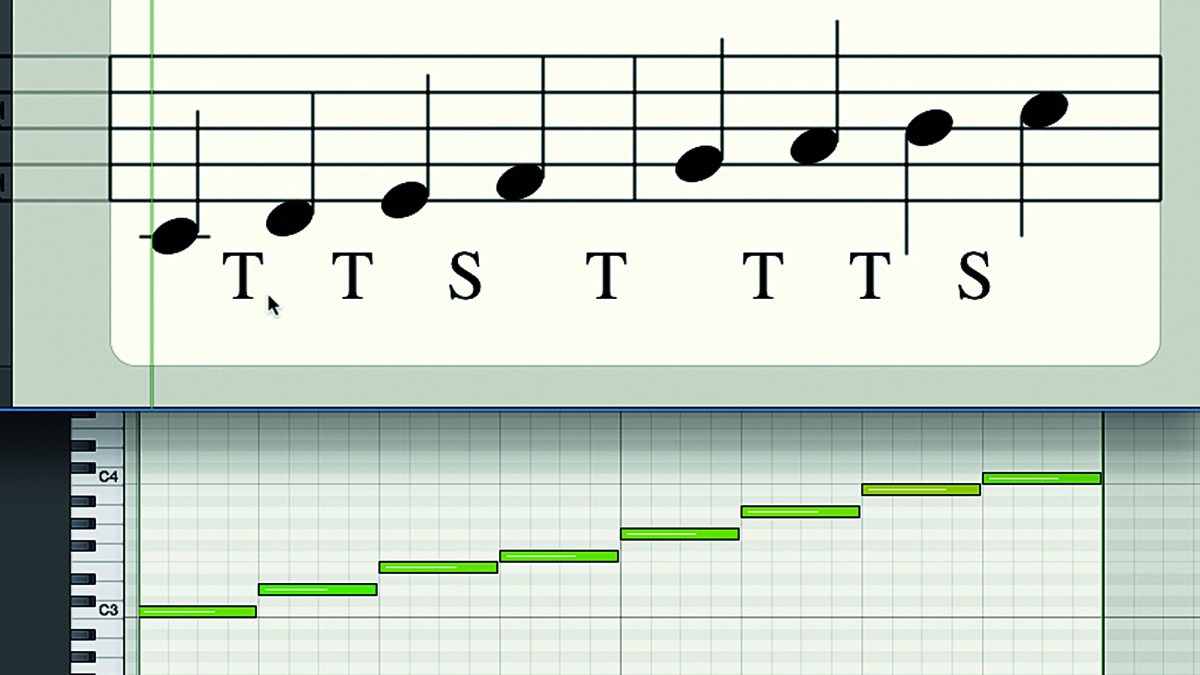
Step 1: This wouldn’t be a music theory basics guide if we didn’t start off by looking at our old friend the C major scale. Here it is, eight notes, played on the white keys of the keyboard, from C to C. Check out the interval pattern between the notes. We have C-D-E-F-G-A-B-C, so the interval pattern is T-T-S-T-T-T-S, where T stands for Tone and S stands for Semitone.
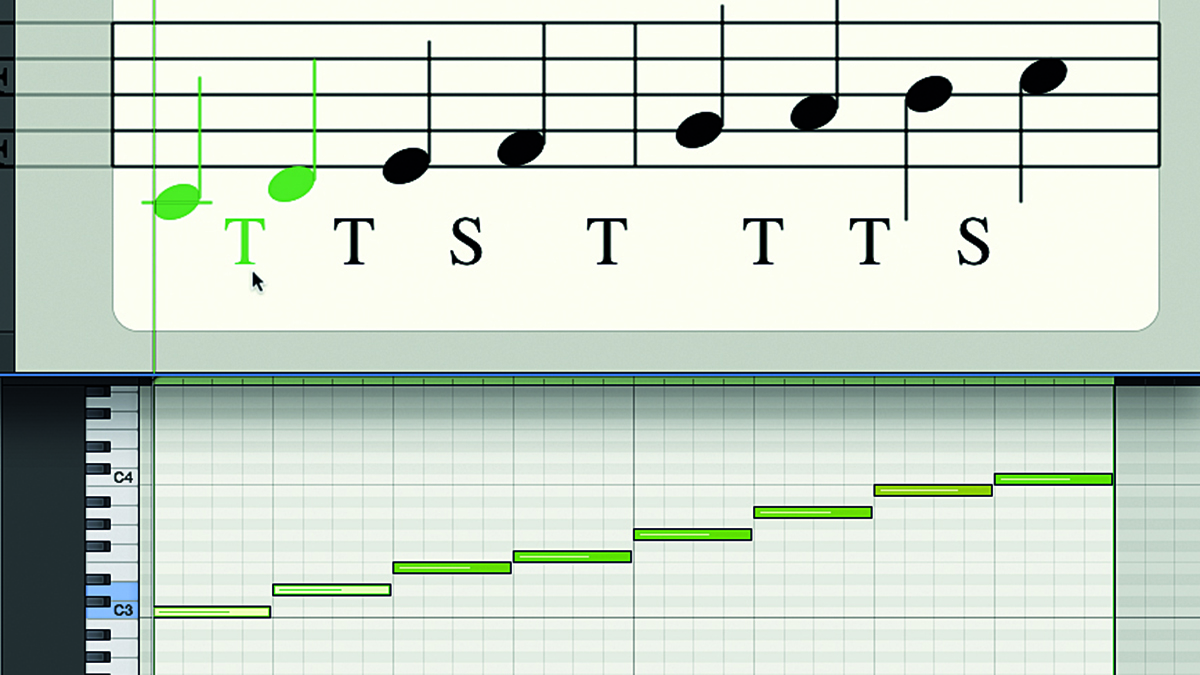
Step 2: What this means is that the interval between the first two notes in the scale, C and D, is a tone (two semitones), between D and E is another tone, between E and F is a semitone, and so on up the scale. If we were to repeat this T-T-S-T-T-T-S pattern starting on a note that’s not C, the result would still be a major scale with that note as its root.
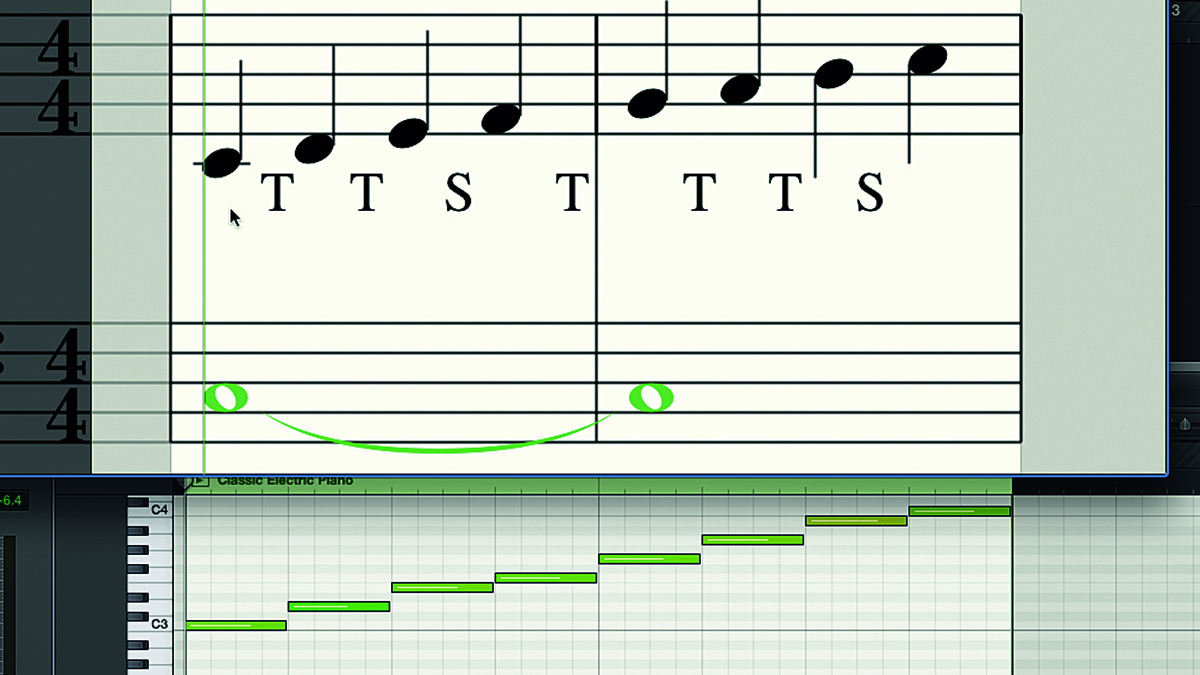
Step 3: The major scale in its standard form is, in fact, the first of the seven modes, the Ionian mode. Here it’s played from C to C, and emphasised by a long C in the bass. The bass note playing the root, or tonic, of the scale, reinforces its ‘tonal centre’ so we can rely on what our ears are saying: that this is a bog standard C major scale, aka C Ionian.

Step 4: Let’s now look at the same scale, playing the exact same notes, but instead of going from C to C as before, we now play all the white notes from D to D. It’s all the same notes, in the same sequence, but just by starting from a different place, we’ve switched to the second mode, the Dorian mode.
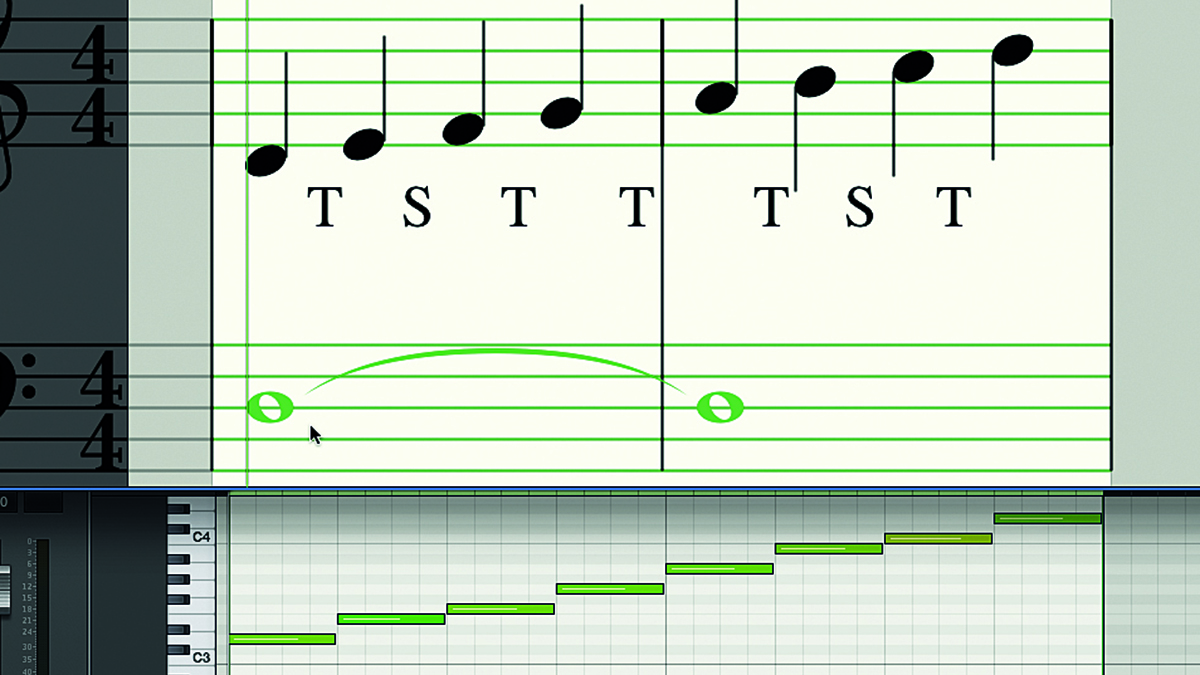
Step 5: The reason it sounds different is that the interval pattern has shifted - it’s now T-S-T-T-T-S-T. Our ears are now hearing the first note of the new scale (D) as the root. Reinforcing the new root note of D with a long, low D bass note confirms the scale’s new, minor-ish identity: D Dorian. It’s the mode used in Eleanor Rigby and Scarborough Fair.
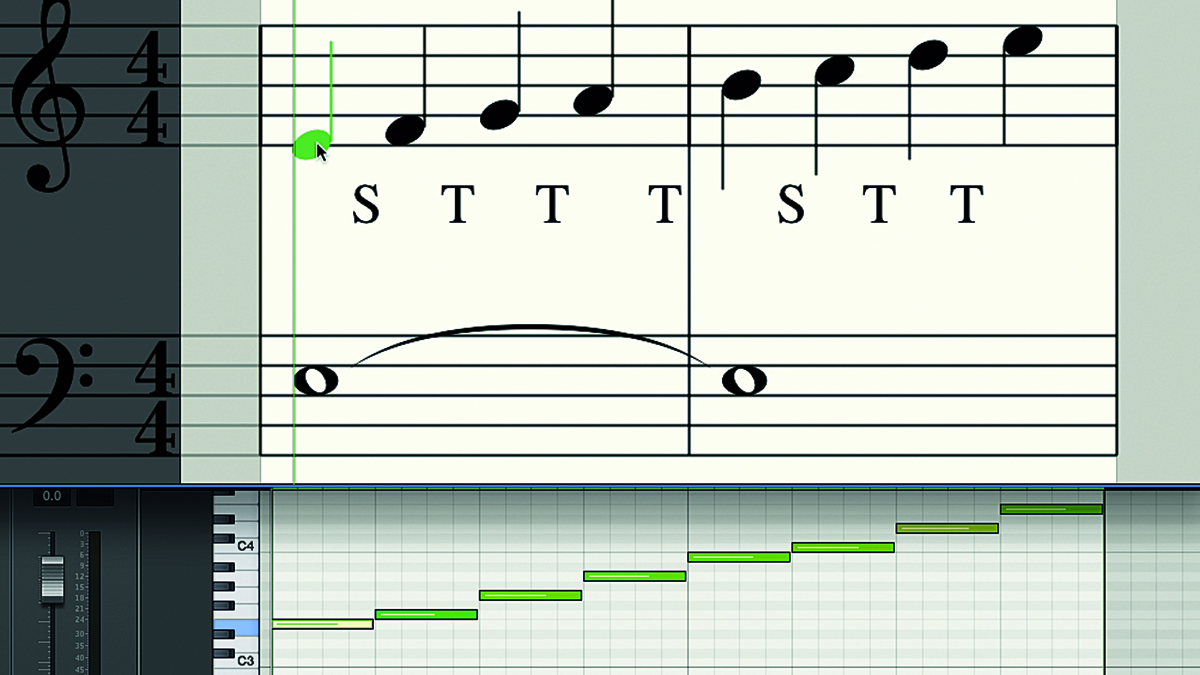
Step 6: Continuing in this vein, the next mode is the Phrygian mode, created by starting a major scale from its third degree - in the case of C major, this is from E to E. Its interval pattern of S-T-T-T-S-T-T lends the Phrygian mode a distinctly Spanish feel. It’s effectively a traditional minor scale with a flattened 2nd degree.
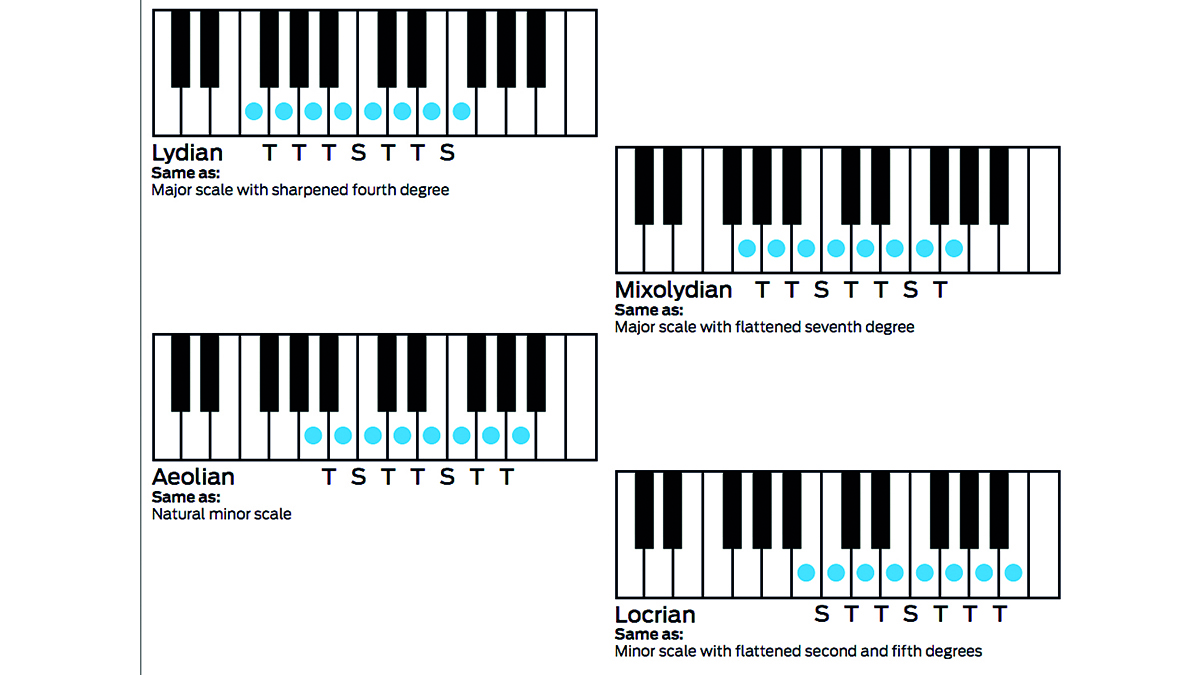
Step 7: Lydian, Mixolydian, Aeolian and Locrian, the four remaining modes, follow the same pattern, each mode shifting another note up the scale to use as its starting note. The table below shows the seven modes all starting from C - C Ionian, C Dorian, C Phrygian, etc.

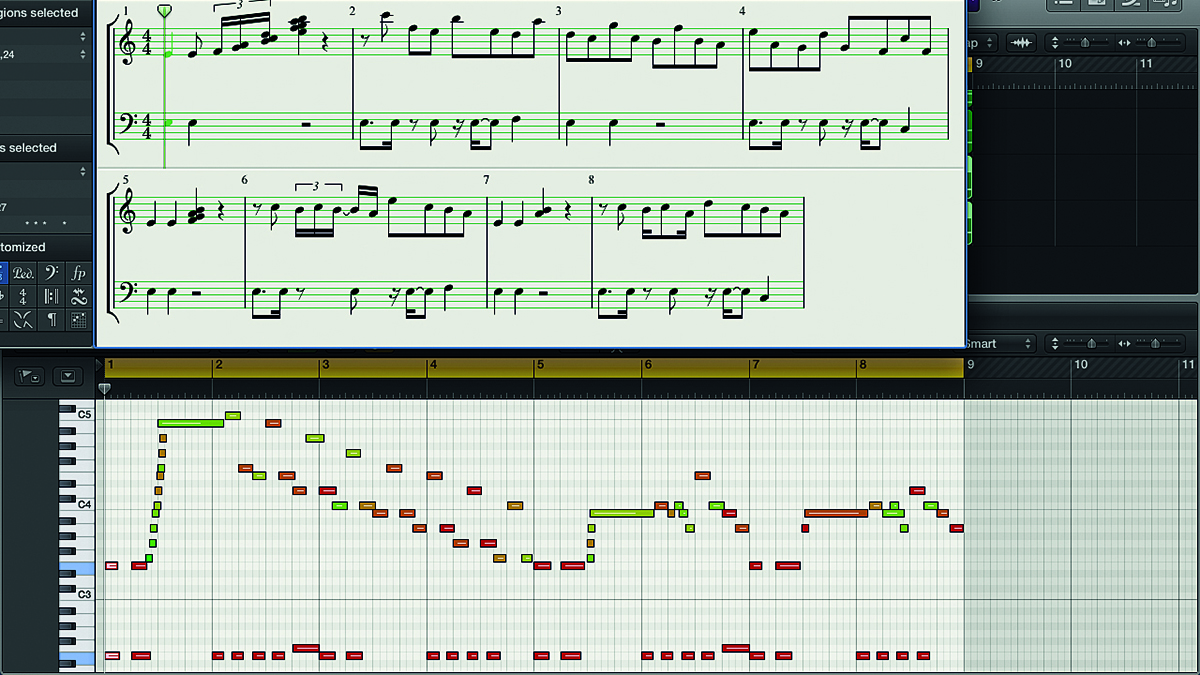
Step 8: So, how do we put all this to good use in our tunes? You can take the notes in each mode and play them in any order or combination over the required bass note.Here we have a lead line playing notes from the C major scale over an E sustained bass to produce a melody in the E Phrygian mode.
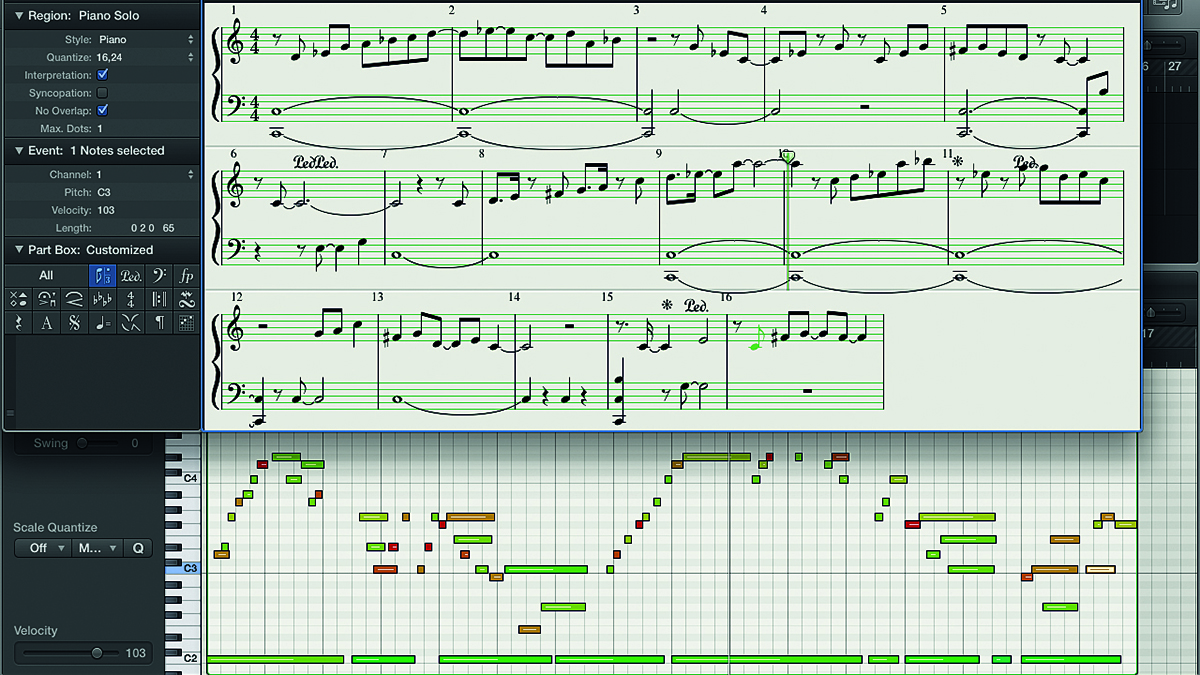
Step 9: Here’s a track based in the key of C whose melody switches from C Dorian (C-D-Eb-F-G-A-Bb) to C Lydian (C-D-E-F#-G-A-B) and back. Notice how each mode that passes through the note of C comes from a different parent major scale. All the notes in C Dorian come from the Bb major scale, as C is the second degree of Bb major. The notes in C Lydian originate from the G major scale.

Step 10: This tune is made up of notes from the G major scale (G-A-B-C-D-E-F#), but it’s being played over a sustained E bass note. What mode does this make it? E is the sixth note of that scale, so playing those same notes starting from E will give us… the Aeolian mode! The Aeolian, coincidentally, is identical to the minor scale.
Recommended listening
Lorde - Royals
The Mixolydian mode is a major scale with a flattened 7th degree. The vocal melody in Royals is a perfect example of D Mixolydian (D-E-F#-G-A-B-C-D), particularly in the verse sections.
Danny Elfman - The Simpsons theme
The Lydian mode gives the famous Simpsons theme its familiar jaunty feel. The initial melody is mostly C Lydian but sneaks in a flattened 7th at the end of the phrase.
Pro tips
Individual identities
While modes are derived from parent major scales, once you’ve got your head around that, it’s a good idea to consider them as scales unto themselves. For instance, F Dorian (F-G-Ab-Bb-C-D-Eb) may look similar to the traditional F minor scale (F-G-Ab-Bb-C-Db-Eb), except that F Dorian contains a D, where F minor contains a Db. So another way to think of the Dorian mode is that it’s effectively a minor scale with a sharpened sixth degree.
Relatively speaking
Just as C major is the relative major of A minor, you can also use the relative major term when talking about modes. Let’s take D Dorian as an example. Because Dorian is the second mode, and begins from the second degree of its parent major scale, the parent scale of D Dorian must be C major, as D is the second degree of the C major scale. Thus we can say that C major is the relative major of D Dorian.
Computer Music magazine is the world’s best selling publication dedicated solely to making great music with your Mac or PC computer. Each issue it brings its lucky readers the best in cutting-edge tutorials, need-to-know, expert software reviews and even all the tools you actually need to make great music today, courtesy of our legendary CM Plugin Suite.

